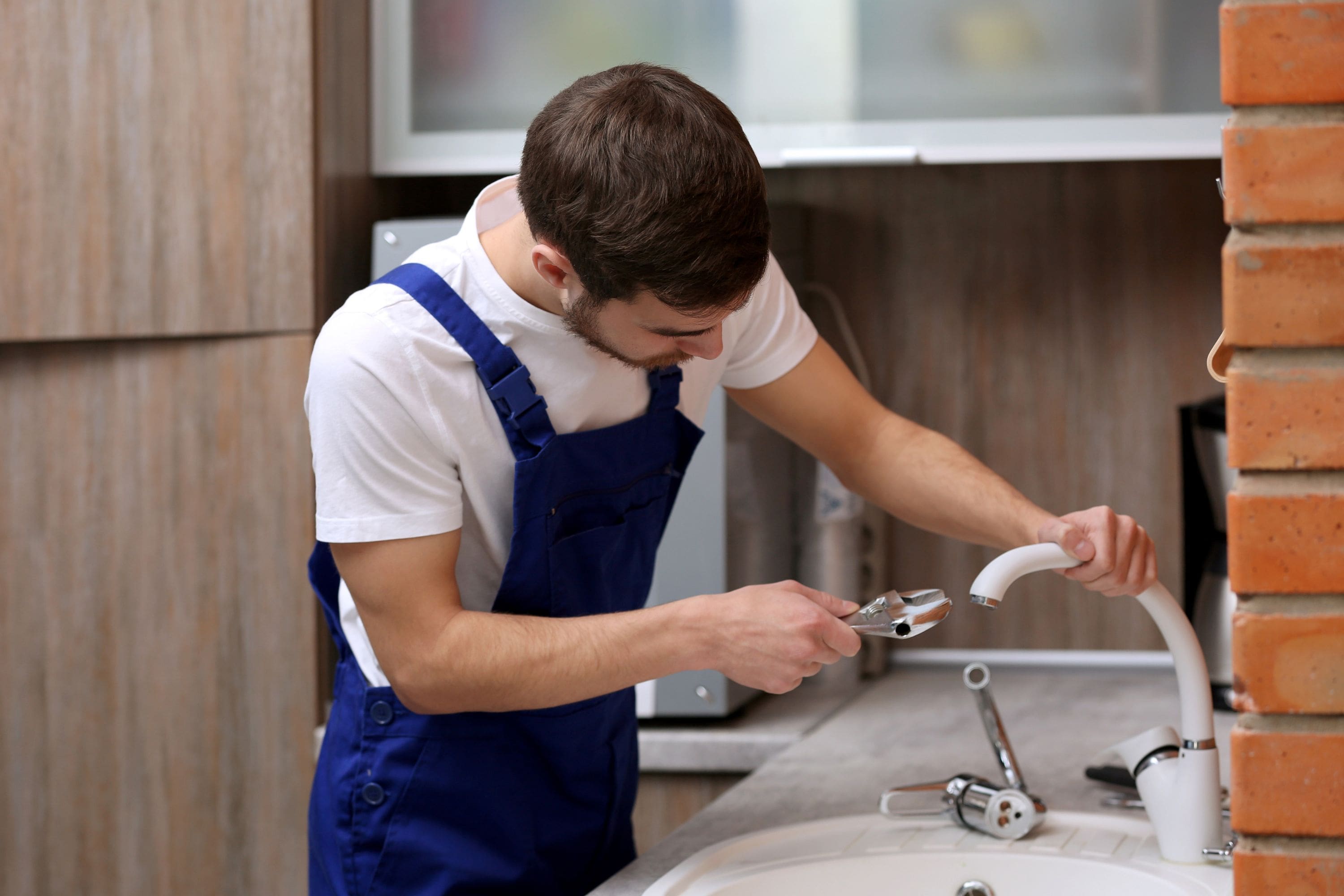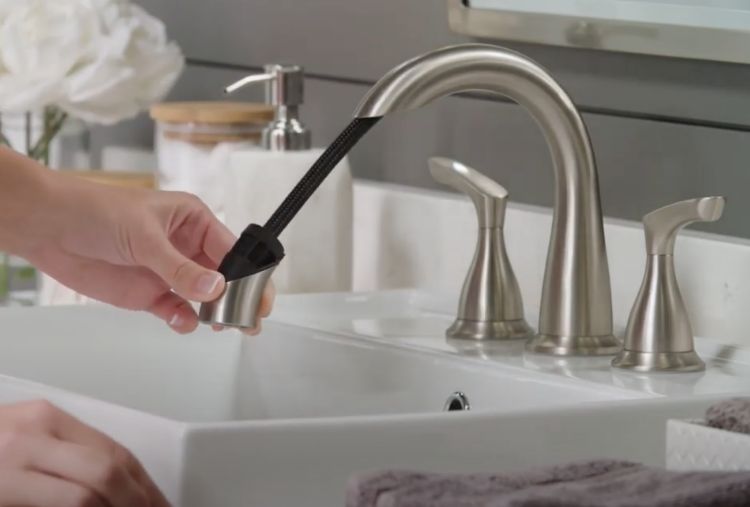How It's Essential to Fix a Dripping Faucet
How It's Essential to Fix a Dripping Faucet
Blog Article
How do you feel with regards to Should I Repair or Replace a Leaky Faucet??

Dripping taps may appear like a small inconvenience, but their influence surpasses just the annoyance of the audio. From drainage to sustaining unnecessary monetary expenses and health threats, overlooking a trickling faucet can cause different effects. In this article, we'll explore why it's essential to address this usual household concern without delay and successfully.
Wastage of Water
Environmental Impact
Trickling taps add substantially to water wastage. According to the Environmental Protection Agency (EPA), a single faucet leaking at one drip per secondly can waste greater than 3,000 gallons of water per year. This not only pressures water resources however additionally affects communities and wild animals dependent on them.
Financial Costs
Increased Water Expenses
Beyond the environmental impact, leaking taps can blow up water bills considerably. The gathered wastage in time equates right into greater energy costs, which might have been stayed clear of with prompt repair work.
Prospective Building Damage
Additionally, extended leaking can lead to harm to components and surface areas bordering the tap. Water buildup can create staining, corrosion, and also architectural issues if left unattended, causing additional repair costs.
Health Worries
Mold and Mold Development
The consistent visibility of wetness from a dripping faucet produces an ideal atmosphere for mold and mildew development. These fungi not only jeopardize interior air top quality but also position wellness threats, specifically for people with respiratory system conditions or allergies.
Waterborne Diseases
Stagnant water in dripping faucets can become a breeding ground for microorganisms and other virus, raising the threat of waterborne conditions. Impurities such as Legionella germs flourish in stagnant water, possibly resulting in significant illnesses when ingested or inhaled.
DIY vs. Specialist Repair work
Advantages and disadvantages of DIY Repair Work
While some might try to fix a trickling faucet themselves, DIY repair services include their very own collection of difficulties. Without correct expertise and tools, DIY attempts can exacerbate the concern or bring about insufficient repair work, extending the issue.
Advantages of Employing a Professional Plumber
Hiring a specialist plumber guarantees that the underlying root cause of the leaking tap is addressed successfully. Plumbing technicians have the expertise and tools to identify and repair faucet problems effectively, saving time and decreasing the threat of additional damage.
Step-by-Step Guide to Taking Care Of a Dripping Faucet
Devices Needed
Prior to trying to repair a trickling tap, collect the required tools, including a flexible wrench, screwdrivers, substitute parts (such as washers or cartridges), and plumber's tape.
Typical Tap Issues and Their Solutions
Identify the type of tap and the certain issue causing the drip. Typical issues consist of damaged washers, corroded valve seats, or defective O-rings. Refer to maker guidelines or on-line tutorials for detailed assistance on repair services.
Preventive Measures
Routine Maintenance Tips
To prevent trickling faucets, carry out routine maintenance such as cleaning up aerators, inspecting for leaks, and replacing worn-out components without delay. In addition, take into consideration setting up water-saving tools or upgrading to more reliable fixtures.
Importance of Prompt Services
Resolving dripping faucets as quickly as they're observed protects against more water waste and potential damage, eventually conserving both water and cash in the long run.
Influence On Building Worth
Understanding of Well-Maintained Residential Or Commercial Property
Preserving a property in good condition, including dealing with maintenance concerns like trickling taps, boosts its regarded value and value among prospective customers or tenants.
Influence on Resale Value
Properties with properly maintained plumbing fixtures, consisting of taps, command greater resale worths in the realty market. Resolving leaking faucets can add to a favorable impact during residential property inspections and settlements.
Ecological Responsibility
Private Payment to Conservation
Taking duty for fixing leaking faucets straightens with wider efforts toward water preservation and environmental sustainability. Every person's activities collectively make a substantial impact on preserving valuable resources.
Sustainable Living Practices
By focusing on prompt fixings and embracing water-saving habits, individuals add to sustainable living techniques that benefit both present and future generations.
Final thought
Dealing with a dripping faucet goes beyond plain comfort; it's an essential action toward conserving water, lowering monetary expenses, and protecting health and residential property. Whether via do it yourself repair services or specialist assistance, doing something about it to deal with dripping taps is a tiny yet impactful method to advertise responsible stewardship of resources and contribute to a healthier, a lot more sustainable future.
How to Fix a Dripping or Leaky Faucet
A leaking faucet is one of the most common problems that homeowners encounter, but it being commonplace doesn’t make it any less annoying. The constant drip drip drip of a leaking bathtub faucet, showerhead, or sink tap can disturb your home’s serenity. Left neglected, a dripping faucet can also result in higher water bills and discoloration or mold growth in your sink or plumbing fixtures.
Fortunately, you don’t have to be a trained plumber to know how to stop a dripping faucet. With some basic tools, replacement parts, and a little patience, leaky faucet repair is a breeze. In this article, we’ll explain what causes dripping faucets and how you can fix them.
What Causes a Leaking Faucet?
Kitchen and bathroom faucets come in all manner of designs, but most involve some combination of valves, O-rings, seals, and washers. The O-ring is usually the weakest link, but any one of these pieces can wear down over time. Heat, moisture, temperature fluctuations, minerals, mold, and movement can contribute to warping and corrosion, breaking the watertight seal. This just comes with the territory of being a homeowner. Everything is always subject to wear and tear, and some component parts of your appliances and fixtures need to be replaced on occasion. At least replacement O-rings are cheap!
More rarely, dripping faucets can be a symptom of excessively high water pressure. Were this the case in your home, you would probably notice that the leak is not isolated to one faucet. Water pressure issues are harder to resolve on your own. We recommend contacting a professional plumber if you suspect your water pressure is too high.
How to Fix a Dripping Faucet
Pipe wrench or monkey wrench Allen wrench set Screwdrivers Old towel or rag Shut off the water.
Before you do anything, you need to turn off the water to keep from drenching your kitchen or bathroom. You should find a valve under the sink and against the wall. Once you’ve turned this valve, try turning the faucet on to confirm that the water source has been cut off.
If you can’t locate your local valve for the faucet you’re working on, you can always shut off the water to the house at the main valve. Of course, this will prohibit anyone from using the sinks, showers, or toilets while you’re working on the faucet that’s giving you trouble.
Plug or block the drain.
You’ll be disassembling the faucet and removing some small bits of hardware. Plug the drain with a stopper or rag to avoid the possibility of a small screw falling into your P-trap.
Take apart the faucet assembly.
There are several varieties of kitchen and bathroom faucets, each with its own manner of assembly. For detailed instructions on how to disassemble your faucet, you can refer to the fixture’s manual or contact the manufacturer. If you know whether you have a ball, disc, cartridge, or compression faucet, you can find detailed schematics online.
In general, you need to begin by removing the faucet handles. You might notice a small screw that you’ll need to remove with a screwdriver or Allen wrench. If you don’t see any visible securing hardware, it’s likely hidden under a decorative cap that can be unscrewed or popped off with flathead screwdriver.
Remove each piece methodically, consulting a schematic when necessary. Take notes or arrange the pieces in such a way to make it easier to correctly reassemble the faucet later.
Remove the cartridge.
Once you’ve removed the handles and securing hardware, you should be able to remove the valve cartridge or stem. Some cartridges will slide right out. Other faucet models will require you to loosen a nut with a pipe wrench before you can remove the valve stem.
Examine the exposed hardware.
With the cartridge or stem removed, inspect the component parts. Check the rubber O-rings for wear and tear. Also examine the seat washer for corrosion or other damage. These pieces are usually the responsible parties for a dripping faucet, but it’s worth inspecting the other component parts while you have the faucet disassembled.
Find replacement parts.
Once you’ve identified which faucet component has failed, find an identical replacement. Your local hardware store should have O-rings, seat washers, and other standard components in stock. If you have a luxury or uncommon faucet, you may have to contact the manufacturer for a replacement part.
It’s a good idea to take your old parts with you to the hardware store so you can compare them with the store’s inventory and be sure you’re purchasing the correct replacement.
Reassemble the faucet.
With your new parts in hand, reconstruct the faucet and handles. Don’t be tempted to overtighten screws or nuts. You might think this could create a better seal, but it can instead damage or bend a delicate part of the assembly and create a new problem for you.
Turn on the water and test the faucet.
The only thing left to do is test your work. Unplug the sink, turn the water back on, and try the faucet. Congratulate yourself on a job well done!
https://www.libertyhomeguard.com/how-to-fix-a-dripping-or-leaky-faucet/

As a serious reader on Why Is It Important To Fix Your Leaking Tap/Faucet?, I thought sharing that segment was a great idea. If you please pause to share this article if you liked it. Thank you for going through it.
Report this page